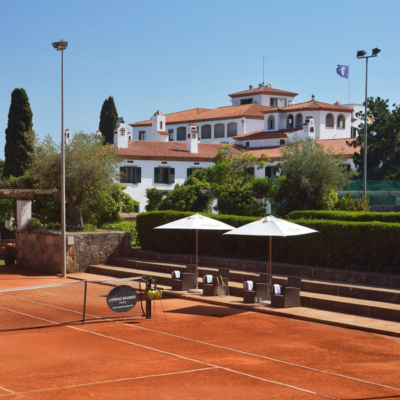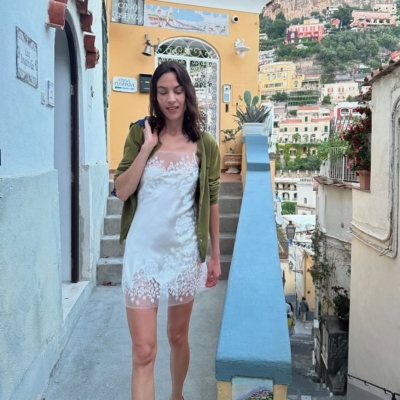Glossy garden designer Leonie Cornelius describes how Irish chef Eddie Atwell is highlighting the value of connecting with the wild …
Have you ever tasted a carrot straight from the ground? Anyone who has ever cooked their own vegetables will tell you this: home-grown produce simply tastes better. As a garden designer I like to think that growing something yourself, seeing the seeds turn to plants, through to the harvest and all the way to the table is an incredibly wholesome and rewarding experience, one which teaches us patience and respect for the things we eat on an everyday basis.
Growing our own produce also has positive ethical implications which we often don’t think about. Do you ever ask yourself who grows the beans we buy in the supermarket? Or why a papaya from Brazil may cost €1.99 despite the 8000km in air miles it has travelled? More and more of us are asking exactly these questions and, as a result, are making more informed decisions about what we put on our table.
Many of us want to make a difference but where does one start? On a recent trip to West Cork, I met a chef who is a trailblazer in creating food with wild connections. Eddie Atwell is the head chef at Eccles Hotel in Glengarriff and his approach is rooted in wild connections. From foraging to growing his own, here soil to table connections play a vital role in what is served in the restaurant.

When I visited, I found Eddie in his kitchen garden, surrounded by blooming dahlias and fennell dust, looking more like a tattooed rockstar than a chef. Truly in his element Eddie showed me many of the plants he has grown which become a vital part of his well known wild-inspired tasting menus. From cucamelons to verbena, wasabi to ten varieties of mint, wild sea asters from foraging and even the ancient monkey puzzle tree seeds which he was gathering – the surrounding local nature and his garden are the most creative providers for his dishes. As he led me around his many plants he told me about his deep passion for food and how the “soil to table” approach is part of how he lives, thinks and cooks.
The warmth and micro climate of his site has allowed this talented young chef to plant endless amounts of herbs, vegetables and fruit, all of which make their way into his daily specialities and which he harvests slowly and carefully. Much like wild foraging, of which he is also an expert, this process allows for seasonal changes and remaining seeds to grow for wildlife sustenance.

I asked him about the many dahlias in vibrant shades of pink, peach and yellows, he grows at the front of the hotel. It turns out these flowers were sourced at Bumblebee Flower Farm down the road from the hotel. Flower farmer Mags Riordan has collaborated with Eddie on many projects. I love the idea that a dahlia which grows in Mags garden and is enjoyed by bumblebees and pollinators, is divided and planted in Eddie’s garden, enjoyed by more bees and then this same dahlia’s petals are harvested for Eddie’s heavenly garden-inspired menu.
After experiencing Eddie’s tasting menu I understood the importance of every grain of fennel dust he so carefully collects, the rich earthiness of the beetroot he pulled up as we explored and the sharp spiciness of the “Arabian Night’s” dahlia I found on my second course. It all just suddenly made sense and felt so right – the connection of soil to plant to pollinator to plate.
If you are thinking about starting your own edible garden, here are my tips and top three recommendations. These look wonderful in garden schemes and add delicious touches to your recipes.

Nasturtiums are originally from South America and are very peppery in taste – almost like watercress. My favourite thing about this plant is how fast it grows and this makes it an incredibly rewarding one to plant with young children. Both the leaves and the flowers can be eaten and the unripe seeds can be put in spiced vinegar to make delicious Nasturtium capers. The flowers of this plant are so pretty and look amazing in salads and stir fries. They have very large amounts of Vitamin C so are incredibly healthy. They are also often used in herbal medicine due to their antiseptic qualities. This plant is great to explore the sense of taste and to encourage kids to be adventurous and munch on the sweet-spicy taste of the pretty flowers. They can be grown outside or in a small pot. I like to plant about three seeds in a small pot (about 20cm deep) in a draining organic compost. Cover with the soil and water well.

The Calendula, or marigold, is another edible plant that is very useful in salads. These pretty flowers are native to southwestern Asia, western Europe, and the Mediterranean. The petals of these flowers are mostly a deep orange though there are many other varieties. The rich orange colour, when extracted from these flowers, has even been used to dye cheese. The Romans and Greeks used to wear the Calendula as crowns and garlands, and in India they are considered sacred and are used to decorate the statues of Hindu gods. Calendula are often used in beauty products as well and you will find the ingredient of c.officinalis, which is healing and detoxing in many creams and lotions. The best time to plant calendula is in spring after the risk of frost is over and then succession planting throughout the summer season. This will mean you’ll have growth all through the summer and autumn too. Sow the seeds into well-draining soil – preferably directly into the well-tilled soil and water.

The Cornflower is a common wildflower that is originally native to the near East but has naturalised in many European, Scandinavian and North American regions. Cornflowers have been used for centuries to create a deep blue dye and you can even make a homemade food dye out of them as they are edible. The taste of the pretty common cornflower is very delicate – a sweet spicy mix that goes well in salads for both taste and visual appeal. The best time to plant these is from March to May so that they flower from June to September. Create some drills about 12mm deep in well-prepared soil and sprinkle the seeds carefully into the drills. If you’re creating more than one then I would recommend the drills being about 30cm apart. When the plants start to get bigger, thin them out where they look crowded.
For more gardening tips from Leonie and a delicious Beetroot and Blue Cheese salad from Eddie Atwell incorporating edible flowers, visit www.leoniecornelius.com
LOVETHEGLOSS.IE?
Sign up to our MAILING LIST now for a roundup of the latest fashion, beauty, interiors and entertaining news from THE GLOSS MAGAZINE’s daily dispatches.











